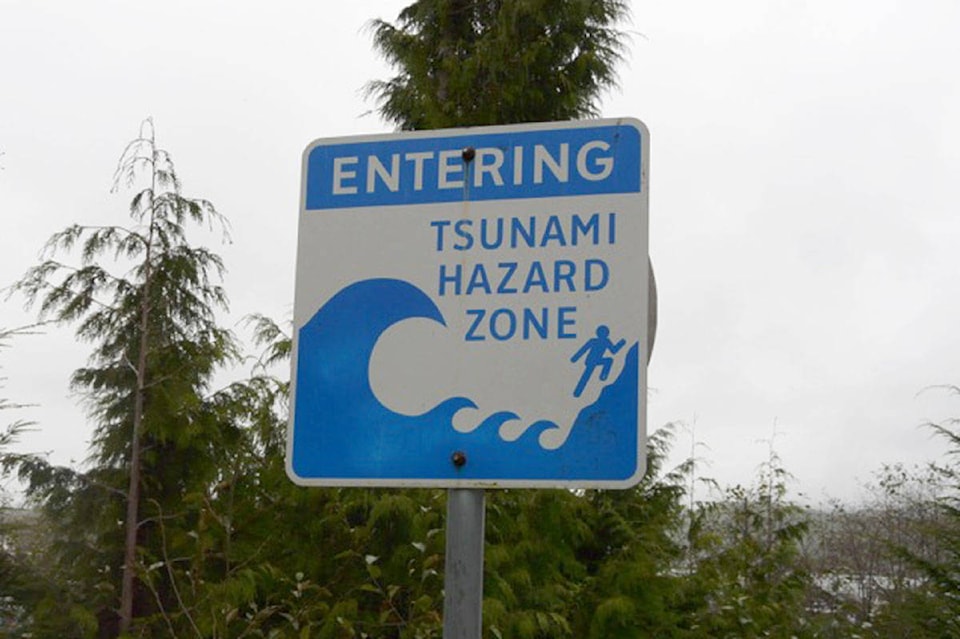At 10:19 a.m. on Oct. 19, people across B.C. will drop to the floor, find cover and hold on to something sturdy. Students of all grades will hide under desks and follow orders to safety. People in offices will test their knowledge of escape routes. No one will be injured, and there won’t be any damage. An earthquake isn’t rumbling through the province, rather the annual Great British Columbia ShakeOut earthquake drill is taking over.
More than 800,000 people participated in the 2016 event, and approximately 730,000 are currently registered.
This year, earthquakes have been making headlines, internationally and closer to home. After Mexico was hit by a 7.1 magnitude earthquake on Sept. 19, more than 200 people were killed. In B.C. the likelihood of a damaging earthquake in the next 50 years is one in three. Everywhere in B.C. is considered high risk. On Oct. 11, Tofino felt a 4.5 magnitude earthquake, Haida Gwaii experienced Canada’s second largest earthquake in 2012 with a magnitude of 7.7, and another in 2015 at a magnitude of 6.1.
Although Prince Rupert does not sit directly on a fault line, a tsunami triggered by an earthquake could impact the oceanfront community.
Deputy fire chief Jeff Beckwith said the two earthquakes that hit Haida Gwaii put reaction time in perspective for the Prince Rupert fire department. “With Haida Gwaii so close, we literally had 28 minutes to an hour to react,” he said.
While neither earthquake caused any damage or injuries in Prince Rupert, Beckwith said the resulting evacuations of low-lying areas were still necessary. “If we had waited and it turned out that it was something significant, potentially the infrastructure and people in low-lying areas would be damaged. The hindsight would be everyone saying, ‘How come you guys didn’t evacuate?’ It’s kind of an inconvenience for people because we’re pulling them out of their houses in the evening, but we’re being proactive to make sure you’re safe.
“I know it changed the way I look at things. It made it a bit more real,” Beckwith said.
Schools
“Every school in the district participates in the Great ShakeOut,” said superintendent Ken Minette. “We take it quite seriously.”
Approximately 2,000 students and 200 adults in School District 52 will go through at least two more drills during this school year. By the time they graduate, the average student will have done 36 drills at school. “They will go through protocol again and again,” said Minette. “Most of the schools will set up scenarios where routes are shut down to become more realistic. I’m quite proud of the work the schools have done to prepare our students.”
The school buildings are of more concern. Charles Hays Secondary School and Lax Kxeen Elementary, both built after 1990 under the new building code, are the newest school buildings in the district and therefore have the lowest seismic rating. Roosevelt Park Elementary School also stiffened its foundation in a seismic update.
Prince Rupert Middle School, however, was built in 1958 and has the highest seismic rating, which is one of the reasons it is the district’s priority for replacement, said Minette.
In an email, MLA Jennifer Rice said, “Our government is committed to accelerating the school seismic mitigation program to make sure all our schools are safe for students and teachers.”
The Ministry of Education is reviewing the district’s five-year capital plan for provincial funding priorities for Budget 2018. A request to replace PRMS is included in the five-year plan. “The Ministry of Education is working with the Prince Rupert school district to move this project forward as quickly as possible,” Rice wrote.
The port
“Our geographic location is at the threat of an earthquake. The possibility of a tsunami is real in our corner of North America,” said Kris Schumacher, the communications coordinator for the Prince Rupert Port Authority.
Besides the 80 staff members joining in on ShakeOut, the port also conducts two annual tabletop exercises — one is on Oct. 20 — and meets quarterly with the Prince Rupert Emergency Preparedness Committee. In the event of a natural disaster, the port models its emergency response on the provincial incident command system.
Businesses
The downtown core is the area that concerns city building inspector Allan Scott the most. The older buildings that sprawl across the main streets of Rupert may not hold up well to an earthquake, he said.
Aside from downtown: “We’re fairly well prepared,” Scott said. “We don’t have many high buildings where the most damage happens.” Buildings with more storeys are more likely to fall, especially if they’re made of solid material like concrete. Wood structures, said Scott, tend to sway well in earthquakes.
Residences
Wartime homes on weak pile foundations are also on Scott’s radar. “These houses were built to last 20 years and they’re still here, so there are some with pile problems that may be a bit of a concern,” the building inspector said.
“It boils down to the foundation and making sure things are well attached. Generally, wood frame structures that are two to three storeys tall will move, but they won’t necessarily fail. The biggest thing is ensuring that bookshelves and kitchen cupboards are well attached,” Scott said.
As for deputy fire chief Jeff Beckwith, after the Haida Gwaii earthquakes, he made a 72-hour safety kit for his household. “In big events, there may be times when you may not have electricity, you may not have natural gas lines going to your house. You still have to live and be able to adapt to short-term inconveniences and losses,” Beckwith said.
“I hope it doesn’t take a major natural disaster for people to realize they need to change patterns and pre-plan. But sometimes it does.”
keili.bartlett@thenorthernview.com
Like us on Facebook and follow us on Twitter
